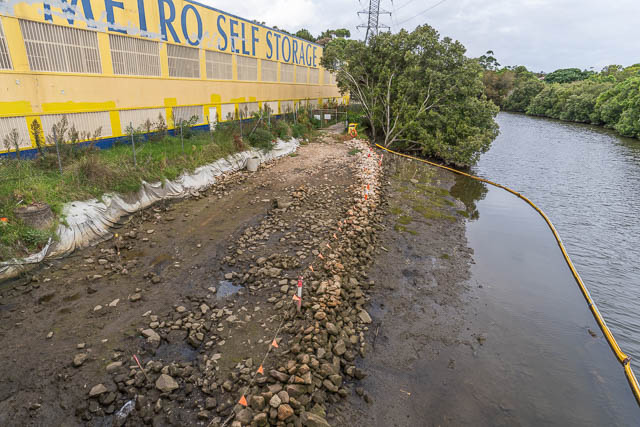As part of the Wurridjal Festival, the Cooks River Alliance had organised a Local History Walk along part of the Cooks River near the old “Sugar Mill”, which is located downstream from Canterbury Road near the Boat Harbour. The walk was being led by Ian Tyrrell, a retired academic and author of “River Dreams” – a very interesting book on the history of the Cooks River.
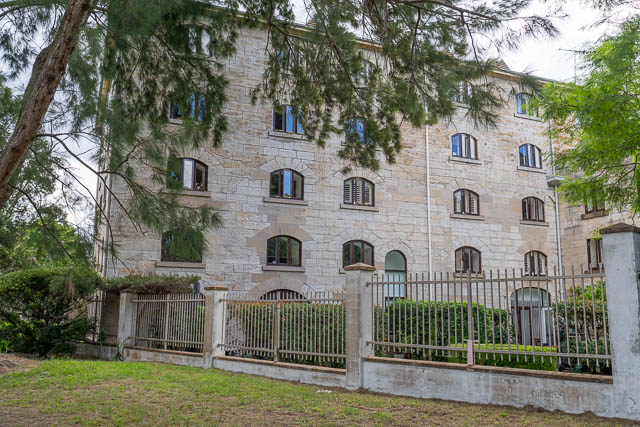
The participants met near the old “Sugar Mill” and the first thing Ian explained was that it was never a mill, but rather a “Sugar Works” as no sugar cane was ever crushed there.
The building was built between 1840 and 1842 for the Australian Sugar Company. It was made from locally quarried sandstone and ironbark timber. The site was bad for transport as there was no railway at the time, and the Cooks River was not navigable by boats. But there was a good supply of water needed for the sugar processing. To provide the water, the Cooks River was dammed at the site of the present footbridge.

Near the factory, a number of workers cottages would have been built.
Raw sugar was brought from overseas to Sydney, then taken by cart along Canterbury Road to the factory, where it was processed into refined sugar and molasses.
However due to labour shortages in the gold rush, the factory was closed in 1854, when the company moved it operations closer to the city.
The building was then taken over by Blacket and Company as a heavy engineering works. Owen Blacket, a son of Edmund Blacket, the colonial architect, was the director of the company. Edmund Blacket was the great uncle of Baron Patrick Blackett the great British physicist. This factory lasted five years.
The building was then occupied by Frederick Clissold and used for wool scouring. Clissold was a very wealthy inner west Sydney land speculator, and a founder of Canterbury Racecourse. But he died when kicked in the head by a horse in 1892. Nearby streets in Campsie and Ashfield are named after him.
It became a Bacon Factory in 1899, owned by Denham, and then by J C Hutton from 1908 to 1982. Many small buildings were constructed nearby such as this one currently occupied by Sydney Water –
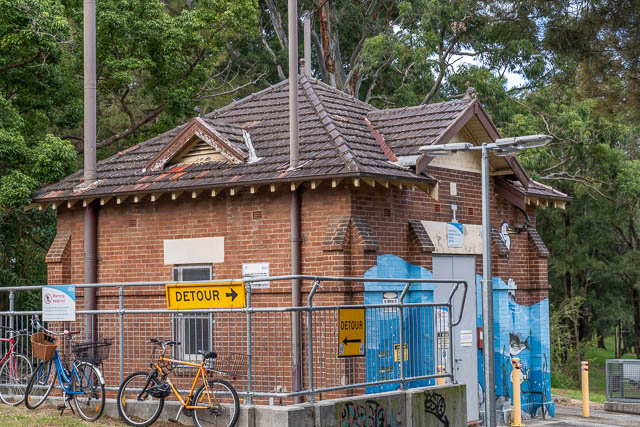
Then the Sugar Works building was purchased by Nick Scali Furniture in 1983. Plans to demolish the old factory and put up high rise unit blocks did not meet planning approval due to the heritage status of the building. Later, a mysterious fire, burnt out the interior of the building but the sandstone structure was largely intact. In more recent year, the old building has been converted to units with some nearby building being constructed in a sympathetic style.
Next to the Sugar Works is the “Boat Harbour. It was built in scheme proposed by local politician, Major Frank Nicholson. With is military background he thought it would be ideal for a training area for naval cadets. Being president of the Cooks River Valley Association, he lobbied for it to be built and the result, in 1964, was “Training Ship Shropshire” – the Boat Harbour naval cadet base. However the harbour silted up and was useless by the mid 1970s.

This is the site of the dam. It was later dismantled to flush out the river.

The entrance to the Boat Harbour –

Looking upstream from the footbridge –
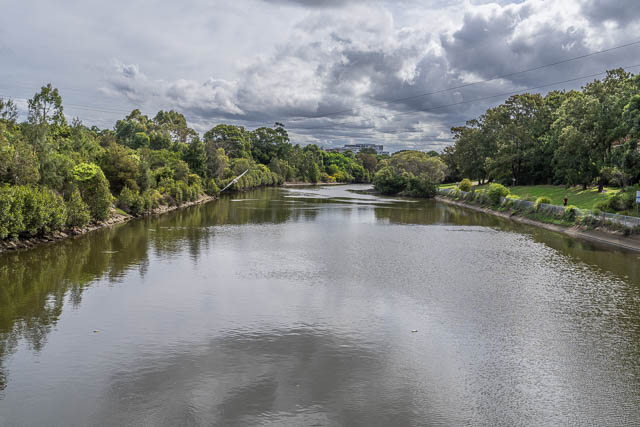
Looking downstream –
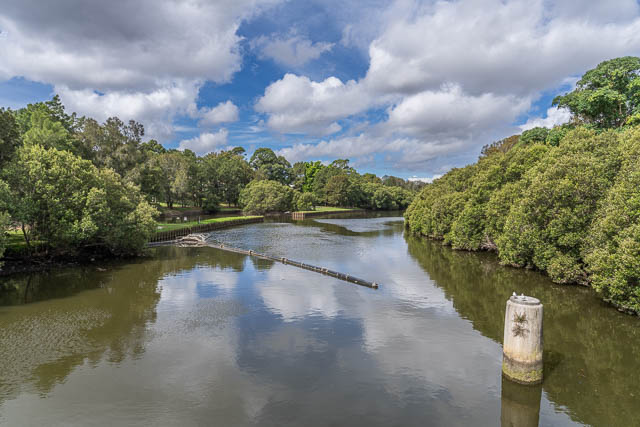
On this side of the river had been another industrial site – a tannery.
We next visited Cup and Saucer Creek and the nearby wetlands. Ian explained that th crew was named because there was a rock formation that looked like a “Cup and Saucer” in the lower part of the creek.

Walking upstream to Mary MacKillop Reserve, where we inspected a number of plaques –

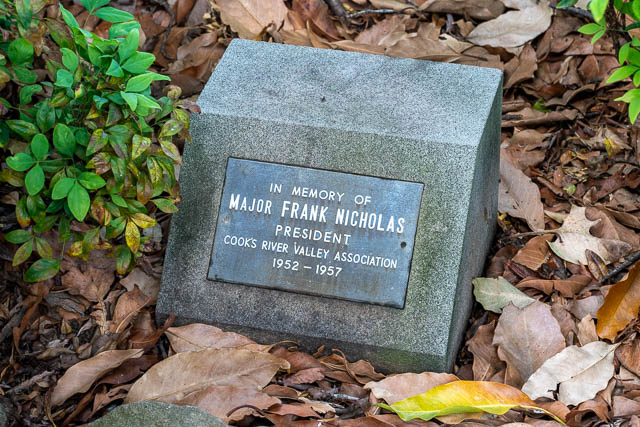
The reserve had earlier been named “Simpson Reserve” after a local alderman.
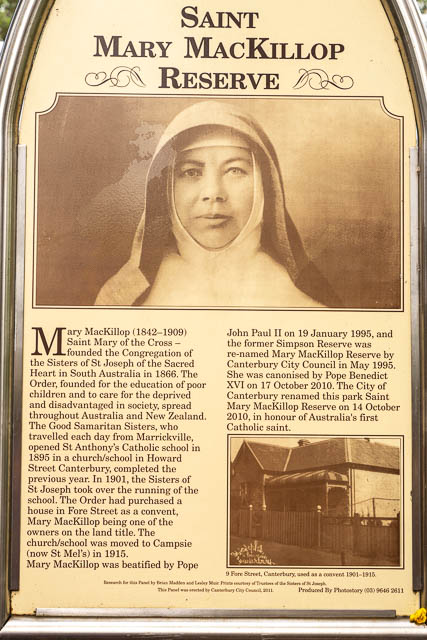
And this nearby building is the old convent once partly owned by Mary MacKillop –

The History Walk had been very informative. Many thanks to Ian Terrell.
On my way to the bus stop, I checked progress of the cycleway underpass. In almost two years there seems to have been very little work done.
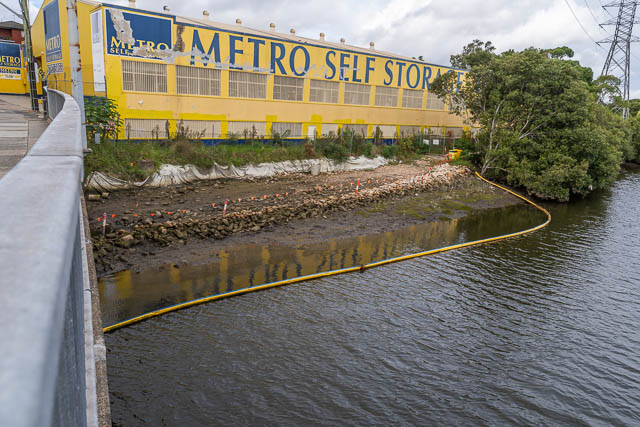
According to the Canterbury Council’s website –
The underpass project has experienced unexpected challenges which resulted in a re-design, involving additional works and technical and safety approvals from Sydney Water and Transport for NSW. . We are in the final stages of finalising this design and hope to resume site works in February, with an approximate reopening date of late May 2024.
